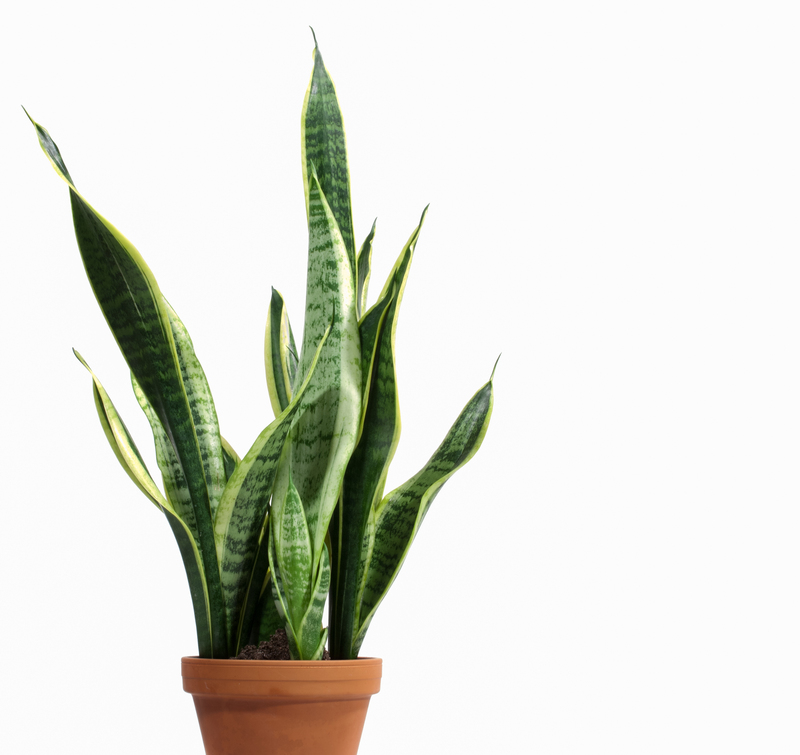Vertical Gardening: The Green Transformation
Posted on 03/09/2025
Vertical Gardening: The Green Transformation
Vertical gardening is rapidly revolutionizing the way we think about horticulture and urban landscaping. With growing populations, urbanization, and the ever-present need for sustainability, the concept of transforming walls, fences, and underused spaces into lush, productive gardens is gaining unprecedented momentum. This comprehensive article explores the phenomenon of vertical gardening, its immense benefits, methodologies, design inspirations, and expert insights to help you participate in the green transformation.

Understanding Vertical Gardening
Vertical gardening, often referred to as vertical landscaping or living walls, is the practice of growing plants up and off the ground--typically on structures that allow vegetation to ascend vertically. This urban gardening trend is not only aesthetic but also maximizes limited space, enhances air quality, boosts mental health, and provides the opportunity to cultivate food and flowers in places once thought impossible.
Why the Shift to Vertical Gardening?
- Space Efficiency: As cities become denser and outdoor space becomes premium, vertical gardening offers a solution by allowing gardens to grow upwards, not outwards.
- Sustainability: Green walls help mitigate urban heat, purify the air, and insulate buildings, cutting down energy costs.
- Innovation in Design: Vertical gardens bring creativity to landscapes and interiors, transforming bland walls into vibrant, living artworks.
- Well-being: Green spaces have proven psychological benefits, reducing stress and enhancing mood, even in compact urban homes.
The History of Vertical Gardening
While vertical gardens might feel like a modern eco-trend, their roots (pun intended) trace back centuries. The ancient Hanging Gardens of Babylon are often cited as one of the earliest and most spectacular examples of growing plants on elevated structures. In the contemporary world, French botanist Patrick Blanc popularized the concept with his innovative "Mur Vegetal" or "green walls," inspiring architects and gardeners globally.
Key Benefits of Vertical Gardening Solutions
- Maximizes Unused Spaces: Transform fences, balconies, rooftops, or even interior walls into thriving plant havens.
- Improves Air Quality: Plants naturally filter out toxins, freshen up the air, and increase oxygen levels indoors.
- Reduces Noise Pollution: Dense greenery absorbs sound, creating quieter, more serene environments.
- Cools and Insulates Buildings: Vertical gardens aid in regulating indoor temperature, saving on energy costs.
- Supports Biodiversity: They provide habitats for pollinators like bees, butterflies, and birds, especially in urban areas.
- Enhances Property Value: Vertical green walls are visually striking and can significantly increase real estate appeal.
Types of Vertical Gardening Systems
1. Trellis and Climbing Plant Gardens
One of the simplest forms of vertical gardening involves using climbing plants like ivy, jasmine, or grapevines that naturally adhere to trellises, lattices, or wires. These gardens require minimal maintenance and provide a free-flowing, organic aesthetic.
2. Modular Vertical Garden Planters
Modular systems consist of stackable containers or pockets that can be attached to walls or fences. They are perfect for vegetables, herbs, succulents, or flowering plants, giving you precise control over soil and watering.
3. Living Walls and Green Facades
Living walls are professionally installed structures, often featuring an integrated irrigation system and a variety of plant species arranged for maximum visual impact and ecological function. Green facades instead allow plants to climb up wireframes affixed to building exteriors.
4. Hydroponic Vertical Gardens
Hydroponic systems use nutrient-rich water rather than soil to nourish plants. This method is especially well-suited for interior spaces and large-scale installations where clean, efficient, and soil-free growth is desired.
Choosing the Right Plants for a Vertical Garden
Crucial to the success of your vertical gardening project is the careful selection of plants. Factors to consider include sunlight exposure, wind, rainfall, and whether the garden is indoors or outdoors. Top plants for vertical gardens include:
- Pothos and Philodendrons: Hardy and adaptable for indoor vertical gardens.
- Ferns: Thrive in moist, shaded environments; ideal for living walls.
- Succulents: Low-water plants perfect for sunny, arid walls.
- Herbs: Basil, mint, thyme, and parsley for culinary vertical gardens.
- Strawberries and Tomatoes: Edible options that do well in modular containers or hanging pockets.
- Orchids and Bromeliads: Exotic species that flourish in vertical wall habitats.
Pro Tips for Plant Selection
- Choose plant varieties with similar water and light needs to simplify maintenance.
- Incorporate evergreen and flowering species for year-round interest and color.
- Consider weight: Lightweight plants and growing mediums are best for wall-mounted systems.
How to Build a Vertical Garden: Step-by-Step
Setting up your own vertical garden at home or in a commercial space is easier than ever, thanks to modern kits and creative DIY solutions. Here's a simple guide to get started with the green revolution:
- Choose Your Location: Find a wall or fence that receives appropriate sunlight for your chosen plants. Consider wind exposure and access to water sources.
- Select a Support Structure: Options include trellises, wall-mounted pots, modular panels, or fabric pockets. Ensure the structure is secure and can support the weight.
- Install Irrigation: Drip systems or self-watering planters help maintain moisture evenly, especially for large or commercial installations.
- Add Growing Medium: Use nutrient-rich soil or special hydroponic substrates suited for vertical applications.
- Arrange and Plant: Start at the top and work your way down, bedding in plants tightly to avoid soil loss. Mix trailing, upright, flowering, and edible species for diversity.
- Maintain Regularly: Water, fertilize, prune, and inspect for pests routinely to ensure a healthy, vibrant living wall garden.
Vertical Gardening Design Ideas and Inspiration
Looking for creative vertical gardening ideas? There's no limit to how you can transform vertical spaces with greenery. Try these inspirational concepts for homes, offices, or public spaces:
- Edible Herb Walls: Grow fresh basil, cilantro, and oregano right in your kitchen with an indoor herb wall for easy harvesting.
- Succulent Art Panels: Craft a living mural with colorful drought-tolerant plants in geometric patterns.
- Recycled Pallet Gardens: Upcycle wooden pallets into stylish vertical planters for balconies, patios, or urban backyards.
- Privacy Screens: Use a vertical trellis with dense foliage to divide spaces or add privacy to your yard.
- Green Office Partitions: Bring the calming benefits of nature indoors with lush, freestanding or wall-mounted plant screens.
Maintenance and Care for Vertical Gardens
A thriving vertical garden requires consistent care, though smart design can help reduce workload. Here are top tips to keep your green walls flourishing:
- Watering: Check moisture daily for indoor living walls; automatic irrigation systems are highly recommended for larger installations.
- Fertilizing: Vertical gardens need regular feeding as nutrients can leach away more quickly than in ground gardens.
- Pruning and Deadheading: Encourage dense, healthy growth and continued blooming by removing spent flowers and trimming leggy stems.
- Check for Pests: Regularly inspect for aphids, spider mites, or fungal issues as airflow can be reduced in dense plantings.
- Replace or Rotate Plants: Some annuals or delicate species may need replacing seasonally for best appearance and health.
Vertical Gardening for Food Production
Urban agriculture is being transformed by vertical gardening! From city rooftop farms to home balcony food walls, growing fruits, vegetables, and herbs vertically means more people can access fresh, local produce. Leafy greens, cherry tomatoes, strawberries, spinach, and even dwarf bean varieties can all thrive on vertical systems with the right light and water.
Pro tip: Using hydroponic or aquaponic vertical gardens can further boost productivity and reduce dependency on soil.
Environmental Impact of Vertical Gardens
The implementation of vertical green walls is not just a design statement--it is a bold move towards environmental restoration in urban areas. Here's how vertical gardening contributes to ecological well-being:
- Reduces Urban Heat Island Effect: Plants absorb sunlight, cooling down building exteriors and surrounding microclimates.
- Enhances Rainwater Management: Living walls trap and filter rainwater, reducing runoff and the risk of urban flooding.
- Encourages Local Pollinators: Even a small wall garden can attract bees, butterflies, and other helpful wildlife.
- Mitigates Air Pollution: Airborne particulates are captured in the dense foliage, resulting in cleaner city air.
Vertical gardening is now an integral tool for architects, city planners, and environmentalists focused on sustainable development.
Common Challenges and Solutions in Vertical Gardening
While vertical gardening is innovative and rewarding, it comes with unique challenges, including water management, weight load, and plant selection. Here are some quick solutions:
- Challenge: Water Retention - Use moisture-retaining soil amendments and hydrogel beads, and consider automated drip irrigation.
- Challenge: Weight Concerns - Select lightweight planting media and ensure wall structures are reinforced.
- Challenge: Plant Nutrition - Regular use of water-soluble fertilizers supplies nutrients efficiently in compact growing spaces.
- Challenge: Sunlight Distribution - Rotate pots or select shade-tolerant species for areas with uneven light.

Vertical Gardening: The Future of Urban Spaces
As cities worldwide grapple with climate change, food insecurity, and increasing demands for green infrastructure, vertical gardening is poised to play a central role. From skyscraper facades covered in lush foliage to community food walls and private urban retreats, the sky is truly the limit.
Incorporating vertical gardens into building design not only enhances aesthetics but also offers measurable environmental, psychological, and economic benefits. As more people embrace this green revolution, we move closer to cities that breathe, sustain, and nourish us--all through the power of plants.
Getting Started on Your Green Transformation
Whether you're an urban dweller, landscape architect, or corporate facility manager, the green transformation made possible by vertical gardening is within your reach. Start small with a kitchen herb wall or go grand with a multi-story living facade--the impact will be felt in improved health, happiness, and ecological contribution.
Conclusion: Embrace the Power of Vertical Green Spaces
Vertical gardening is more than a trend--it's a movement towards a healthier, greener, and more vibrant future. By reimagining our vertical spaces, we unlock the potential for nature to enrich and transform every corner of our lives, from home interiors to bustling cityscapes. Embrace the green transformation today with vertical gardening and help create a brighter planet for generations to come.

